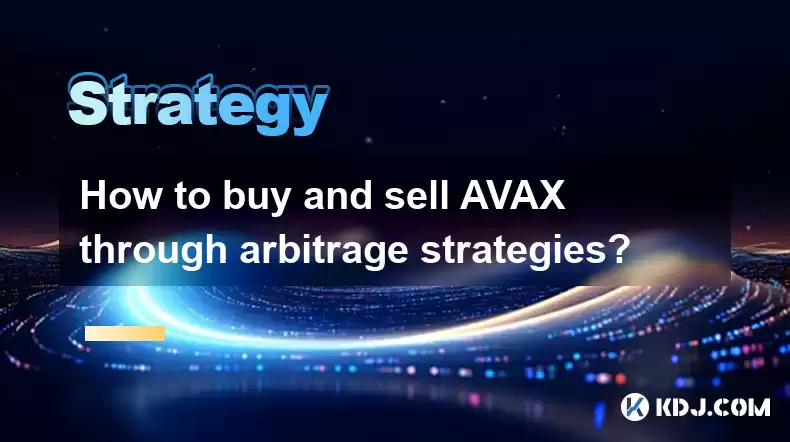-
 Bitcoin
Bitcoin $114500
-0.31% -
 Ethereum
Ethereum $3648
1.11% -
 XRP
XRP $3.033
-0.27% -
 Tether USDt
Tether USDt $0.9999
-0.01% -
 BNB
BNB $758.5
-0.32% -
 Solana
Solana $167.5
1.48% -
 USDC
USDC $0.9998
-0.02% -
 TRON
TRON $0.3331
0.74% -
 Dogecoin
Dogecoin $0.2039
0.25% -
 Cardano
Cardano $0.7419
-0.46% -
 Hyperliquid
Hyperliquid $39.21
2.66% -
 Stellar
Stellar $0.4049
-1.95% -
 Sui
Sui $3.483
-0.56% -
 Bitcoin Cash
Bitcoin Cash $570.8
2.89% -
 Chainlink
Chainlink $16.67
-0.57% -
 Hedera
Hedera $0.2470
-1.57% -
 Ethena USDe
Ethena USDe $1.001
0.00% -
 Avalanche
Avalanche $22.36
1.52% -
 Litecoin
Litecoin $123.4
4.35% -
 UNUS SED LEO
UNUS SED LEO $8.989
0.09% -
 Toncoin
Toncoin $3.324
-2.40% -
 Shiba Inu
Shiba Inu $0.00001219
-1.30% -
 Uniswap
Uniswap $9.811
2.54% -
 Polkadot
Polkadot $3.662
-0.07% -
 Monero
Monero $295.5
-3.85% -
 Dai
Dai $1.000
0.01% -
 Bitget Token
Bitget Token $4.345
0.24% -
 Cronos
Cronos $0.1380
0.95% -
 Pepe
Pepe $0.00001044
-1.14% -
 Ethena
Ethena $0.5981
-4.24%
How to buy and sell AVAX through arbitrage strategies?
To profit from AVAX arbitrage, buy low on one exchange, transfer, and sell high on another, ensuring to account for fees and market volatility.
Apr 21, 2025 at 01:14 pm

How to Buy and Sell AVAX Through Arbitrage Strategies?
Arbitrage trading is a popular strategy within the cryptocurrency market, especially for tokens like AVAX, the native cryptocurrency of the Avalanche blockchain. This article will guide you through the process of buying and selling AVAX using arbitrage strategies, helping you understand the intricacies and potential benefits of this approach.
Understanding Arbitrage in the Cryptocurrency Market
Arbitrage in the cryptocurrency market involves taking advantage of price differences for the same asset on different exchanges. For AVAX, this means buying the token on an exchange where it is cheaper and selling it on another where the price is higher. This strategy can be particularly effective in the volatile crypto market, where price discrepancies can be significant.
To effectively engage in arbitrage with AVAX, you need to:
- Monitor multiple cryptocurrency exchanges simultaneously.
- Understand the fees associated with trading on each platform.
- Be quick in executing trades to capitalize on fleeting price differences.
Identifying Price Discrepancies for AVAX
The first step in executing an arbitrage strategy for AVAX is to identify price discrepancies across various exchanges. Here's how you can do it:
- Use Price Tracking Tools: Websites like CoinGecko or CoinMarketCap provide real-time price data across multiple exchanges. You can set up alerts for AVAX to notify you when significant price differences occur.
- Manual Monitoring: Regularly check the prices of AVAX on exchanges like Binance, Coinbase, and Kraken. Note down the prices and calculate the potential profit after accounting for trading fees.
- Automated Bots: Some traders use automated bots that can scan multiple exchanges and execute trades automatically when a profitable opportunity arises. These bots can be programmed specifically for AVAX.
Executing AVAX Arbitrage Trades
Once you have identified a price discrepancy for AVAX, the next step is to execute the arbitrage trade. Here’s a detailed guide on how to do this:
- Choose Your Exchanges: Select two exchanges where you have accounts and where you've identified a price difference for AVAX. For example, if AVAX is trading at $30 on Exchange A and $32 on Exchange B, you would buy on A and sell on B.
- Transfer Funds: Ensure you have sufficient funds on both exchanges. If you need to transfer funds, consider the transfer time and fees, as these can impact your profitability.
- Buy AVAX on the Lower-Priced Exchange:
- Log into Exchange A.
- Navigate to the AVAX trading pair (e.g., AVAX/USDT).
- Place a buy order for the desired amount of AVAX at the current market price.
- Transfer AVAX to the Higher-Priced Exchange:
- Withdraw the AVAX you just purchased from Exchange A to your wallet.
- Deposit the AVAX into Exchange B.
- Sell AVAX on the Higher-Priced Exchange:
- Log into Exchange B.
- Navigate to the AVAX trading pair.
- Place a sell order for the AVAX at the current market price on Exchange B.
Calculating Profit and Fees
To determine if an arbitrage opportunity is worth pursuing, you need to calculate the potential profit after accounting for all fees. Here's how you do it:
- Calculate Gross Profit: Subtract the buying price from the selling price. For example, if you buy AVAX at $30 and sell at $32, the gross profit per AVAX is $2.
- Account for Trading Fees: Each exchange charges a fee for buying and selling. If Exchange A charges 0.1% and Exchange B charges 0.2%, your total fees would be 0.3% of the transaction amount.
- Calculate Net Profit: Subtract the total fees from the gross profit. If you traded 100 AVAX, your gross profit would be $200, and your fees would be $0.60 (0.3% of $200). Your net profit would be $199.40.
Risks and Challenges of AVAX Arbitrage
While arbitrage can be lucrative, it comes with its own set of risks and challenges:
- Market Volatility: Cryptocurrency prices can change rapidly, and the price difference you identified may disappear before you complete the arbitrage.
- Transfer Delays: Transferring AVAX between exchanges can take time, which can impact your ability to capitalize on the arbitrage opportunity.
- Exchange Limitations: Some exchanges have withdrawal limits or require verification processes that can slow down your trades.
- Regulatory Risks: Different jurisdictions have varying regulations regarding cryptocurrency trading, which can affect your ability to execute arbitrage strategies.
Tools and Resources for AVAX Arbitrage
To enhance your arbitrage trading for AVAX, consider using the following tools and resources:
- Arbitrage Bots: Platforms like 3Commas and Cryptohopper offer bots that can automate the arbitrage process. These bots can be configured to monitor AVAX prices and execute trades when profitable opportunities arise.
- API Access: Many exchanges provide APIs that allow you to access real-time data and execute trades programmatically. This can be useful for developing custom arbitrage strategies.
- Spreadsheets: Use spreadsheets to track your trades, calculate profits, and monitor fees. This can help you keep a clear record of your arbitrage activities.
Frequently Asked Questions
Q: Can I use arbitrage strategies for other cryptocurrencies besides AVAX?
A: Yes, arbitrage strategies can be applied to any cryptocurrency that is listed on multiple exchanges. However, the effectiveness of the strategy can vary based on the liquidity and volatility of the specific cryptocurrency.
Q: Is arbitrage trading legal?
A: Arbitrage trading is legal in most jurisdictions, but it's important to comply with local regulations regarding cryptocurrency trading. Always ensure you are aware of and adhere to the legal requirements in your area.
Q: How much capital do I need to start arbitrage trading with AVAX?
A: The amount of capital needed can vary, but it's generally recommended to start with an amount you can afford to lose. A common starting point for many traders is between $1,000 and $10,000, depending on the frequency and scale of trades.
Q: Can I automate the entire arbitrage process for AVAX?
A: Yes, it is possible to automate the arbitrage process using trading bots. However, you need to set up and monitor these bots carefully to ensure they operate as intended and to manage any potential risks.
Disclaimer:info@kdj.com
The information provided is not trading advice. kdj.com does not assume any responsibility for any investments made based on the information provided in this article. Cryptocurrencies are highly volatile and it is highly recommended that you invest with caution after thorough research!
If you believe that the content used on this website infringes your copyright, please contact us immediately (info@kdj.com) and we will delete it promptly.
- Altcoin Alert: Is Punisher Coin the Presale to Pounce On?
- 2025-08-06 06:50:11
- XRP Price, Bitwise, and the 2030 Forecast: Will XRP Hit the Big Time?
- 2025-08-06 06:50:11
- Ruvi AI: The AI Token Primed for CMC Listing and Explosive Growth
- 2025-08-06 06:30:13
- Sushi's Sizzling Summer: AMA on August 6th & Market Moves!
- 2025-08-06 06:30:13
- Akash Network, NVIDIA Blackwell, and Decentralized AI: A New Era?
- 2025-08-06 06:35:11
- Metamask, Altcoins, and the Move: Is Cold Wallet the Future?
- 2025-08-06 04:30:12
Related knowledge

How to avoid common crypto investment mistakes?
Jul 13,2025 at 01:35am
Understanding the Risks of Crypto InvestmentInvesting in cryptocurrency can be highly rewarding, but it also comes with significant risks. One of the ...

What is a long-short crypto strategy?
Jul 15,2025 at 10:56am
Understanding the Basics of a Long-Short Crypto StrategyA long-short crypto strategy is an investment approach where traders simultaneously take long ...

What is a long-short crypto strategy?
Jul 11,2025 at 01:28pm
Understanding the Basics of Long-Short Crypto StrategyA long-short crypto strategy is an investment approach where traders take both long and short po...

How to use the RSI indicator for crypto?
Jul 12,2025 at 03:56pm
Understanding the RSI Indicator in Cryptocurrency TradingThe Relative Strength Index (RSI) is a momentum oscillator used to measure the speed and chan...

Is copy trading a good strategy for crypto beginners?
Jul 12,2025 at 08:28am
Understanding Copy Trading in the Cryptocurrency MarketCopy trading is a strategy where novice traders replicate the trades of experienced investors a...

How to build a crypto portfolio with $1000?
Jul 13,2025 at 08:14pm
Understanding the Basics of Cryptocurrency InvestmentBuilding a crypto portfolio with $1000 starts with understanding the fundamentals of cryptocurren...

How to avoid common crypto investment mistakes?
Jul 13,2025 at 01:35am
Understanding the Risks of Crypto InvestmentInvesting in cryptocurrency can be highly rewarding, but it also comes with significant risks. One of the ...

What is a long-short crypto strategy?
Jul 15,2025 at 10:56am
Understanding the Basics of a Long-Short Crypto StrategyA long-short crypto strategy is an investment approach where traders simultaneously take long ...

What is a long-short crypto strategy?
Jul 11,2025 at 01:28pm
Understanding the Basics of Long-Short Crypto StrategyA long-short crypto strategy is an investment approach where traders take both long and short po...

How to use the RSI indicator for crypto?
Jul 12,2025 at 03:56pm
Understanding the RSI Indicator in Cryptocurrency TradingThe Relative Strength Index (RSI) is a momentum oscillator used to measure the speed and chan...

Is copy trading a good strategy for crypto beginners?
Jul 12,2025 at 08:28am
Understanding Copy Trading in the Cryptocurrency MarketCopy trading is a strategy where novice traders replicate the trades of experienced investors a...

How to build a crypto portfolio with $1000?
Jul 13,2025 at 08:14pm
Understanding the Basics of Cryptocurrency InvestmentBuilding a crypto portfolio with $1000 starts with understanding the fundamentals of cryptocurren...
See all articles

























































































